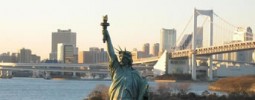Sofia, one of the oldest cities in Europe, is the capital of Bulgaria and sits on the southern part of the Sofia Valley, resting at the foot of the Vitosha Mountains and Lyulin. Formerly called Serdica by the Romans, the city was renamed Sofia in the 14th century. It is now home to 1.4 million people.
Sofia is drenched in history, from its buildings built in every form of European architecture styles, to the cultures and traditions of its people. Experience the architectural movements of past times in the structures that dot the city, from the renovated Alexander Nevsky Cathedral, the public theater, St. George Church, St. Sofia Church, and the Palace of Justice. An immersion in Bulgarian culture that is unique to the city can be further experienced with a visit to the city’s many museums, libraries, and theaters which house the city’s cultural attractions such as performances by the National Opera Ballet. Sofia is also a city of leisure, as seen in its many cafes, restaurants, and shopping boutiques.
Getting around Sofia is best done by buses, trams, and subways. Traveling by car is more difficult since most important highways in the city are still undergoing construction and renovations. Traveling by car exposes you to the risk of car thefts. Also, exercise care when driving around with non-Bulgarian license plates, as this apparently is something that Bulgarian police frown upon. Walking may be more dangerous, as Bulgarian drivers are not known for their kindness to pedestrians. Avoid train and bus stations at night, as well as areas noted for prostitutes and junkies such as the Maria Luiza Boulevard.
US tourists do not require a visa to visit Bulgaria or any of its cities, just a valid passport is needed. The stay is valid for up to 90 days within a six-month period.








